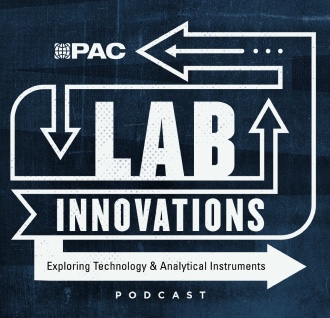Feb-2024
Ultrapure water for electrolysis
Discover the mission-critical feedstock for MW- and GW-scale green hydrogen and ammonia projects of the future.
Stephen B Harrison
sbh4 Consulting
Viewed : 4945
Article Summary
For each kilogram of green hydrogen produced, 9-10 litres of ultrapure water are consumed by electrolysis. This equates to circa 200 litres of water per MW of electrolyser capacity. To generate that amount of ultrapure water, circa 1.5 times as much fresh water is required.
Most large-scale green hydrogen projects are proposing to use renewable power generation from wind and solar resources. The optimum location for wind power generation is often offshore, and the best places to generate low-cost solar power are generally in arid desert locations. Neither location has unlimited access to fresh water, so seawater extraction and desalination will be required.
To generate desalinated fresh water, approximately twice as much seawater is required. So, for each litre of ultrapure water, three litres of seawater must be extracted and processed. Seawater processing to ultrapure water will be an essential aspect of the MW- and GW-scale green hydrogen and green ammonia projects of the future.
Desalination is key for electrolysis in arid locations with ideal wind and solar conditions
Electrolysers are an expensive capital asset and represent a high portion of the capital investment for green hydrogen projects. Project economics can be improved if the electrolysers have a high utilisation rate, meaning they operate for many months per year and many hours per day.
Integration of wind and solar can improve the firmness of renewable power generation. Hybrid schemes of this kind will be optimal in countries such as Egypt, Australia, Namibia, Oman, and Chile. However, these locations are not blessed with abundant fresh water supply. Seawater extraction in many of these places is possible, but desalination adds to the cost and complexity of ultrapure water production.
The technologies that will bring fresh water to electrolysis schemes are exactly those that are relied on today to make potable water available in arid locations. Desalination is used extensively in the Middle East to make water available for the emerging vertical farming sector and coastal cities.
Water tankers deliver fresh water to many villages in South Asia, and drilling for groundwater is common in inland locations without natural rivers. While the technologies are known, they must be adapted to make fresh water available for green hydrogen projects.
Globally competitive green hydrogen and green ammonia production
International competitiveness is essential for GW-scale projects that are being developed to produce green ammonia from green hydrogen as a clean energy vector for international trade. The market is global, and the customers are free to choose the lowest cost supplier. Shipping costs are small in comparison to renewable power generation and electrolysis costs, so optimal electrolyser utilisation and low-cost renewable power generation are essential.
Some of the renewable power modes are more than variable, they are intermittent, meaning that power generation falls to zero for periods of time. Alkaline electrolysers are the cheapest technology to purchase, but they do not cope well with unplanned shutdowns. They prefer that a minimum protective current is permanently flowing. This avoids corrosion of the electrodes and degradation of electrolysis efficiency.
High-capacity batteries can be integrated into the power supply system to ensure a trickle of power flows during periods of no wind or sunlight. Alternatively, power can be drawn from the grid to complement the renewable power generation. However, using grid power may undermine the ‘green’ credentials of the hydrogen and reduce its marketability.
There are only a few locations, such as the Magallanes in southern Chile, where the wind blows steadily throughout the year. These advantaged locations can offer high electrolyser utilisation based on wind-only renewable power supply schemes. Most other locations would seek to integrate wind and solar power to balance the variability of these two sources.
Green hydrogen superpowers of the future will be nations or regions that have ideal conditions for integrated wind and solar. The perfect conditions for green hydrogen electrolysis are locations where the wind picks up during the late afternoon and blows steadily through the night until the sun rises at dawn.
Southern Chile, western Namibia, and the east coast of Oman stand out as excellent green hydrogen production locations. West Australia, north-western Saudi Arabia, north-eastern Egypt, and parts of northern and western China are also blessed with ideal conditions for integrated wind and solar power generation. However, in each of these locations, the rainfall is neither sufficient nor steady enough to provide water for large-scale electrolysis.
Desalination for green hydrogen projects on the Red Sea coast
Helios is the world’s first GW-scale green hydrogen project to be announced and taken through to Final Investment Decision (FID). It is sponsored by Air Products, ACWA Power, and ENOWA, a subsidiary of NEOM. The scheme will use atmospheric pressure alkaline electrolysers from thyssenkrupp nucera to generate green hydrogen from integrated wind and solar power. Air separation units will produce nitrogen to react with the hydrogen in a Haber-Bosch synthesis loop to make green ammonia for export.
The Helios project will be implemented in Tabuk in north-western Saudi Arabia. This is an arid region with less than 2mm of rainfall per month in winter and no precipitation in summer. To support the green hydrogen project, a purpose-built desalination plant will extract seawater from the Red Sea to produce 500,000 m3 a day of fresh water.
The Suez Canal Economic Zone in Egypt lies on the opposite shore of the Red Sea. It stretches from Port Said at the northern end of the Suez Canal to Al Sokhna at the Canal’s southern tip. The zone has attracted many green hydrogen project developers, such as France’s EDF Renewables (through the Green Fuel Alliance), Norway’s Scatec, Australia’s Fortescue Future Industries, and UAE-based AMEA Power.
The AMEA Power project involves USD $2 billion of investment and will be located close to the port of Ain Sokhna in the Suez Canal Economic Zone. It will produce 390,000 tonnes of green ammonia per annum to predominantly serve export markets. The hydrogen electrolysis scheme will require more than a million cubic metres of water per year.
Fresh water from the Nile is required for other purposes, such as crop irrigation and to serve population centres, which are built up along the banks of the river. Therefore, major desalination facilities will be required to support the AMEA Power project and other green hydrogen projects in the Suez Canal Economic Zone.
Categories:
Add your rating:
Current Rating: 4

















